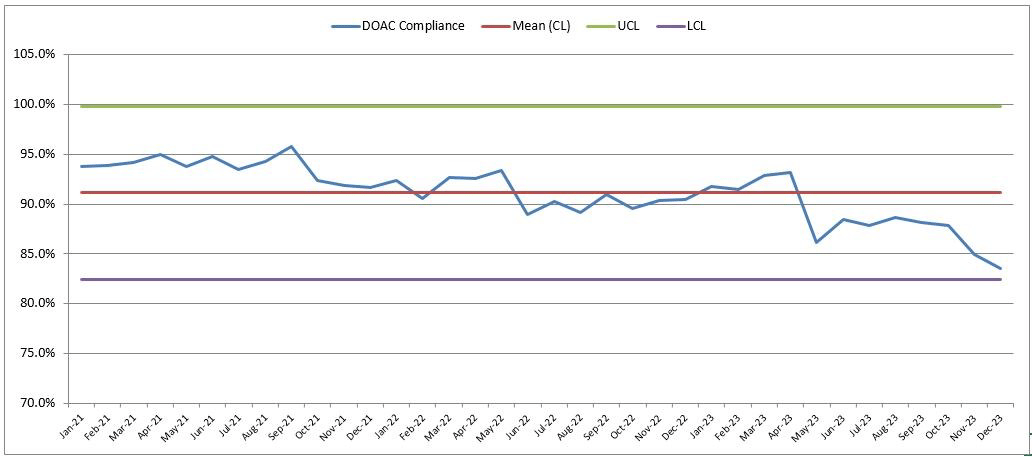Direct Oral Anticoagulants Compliance
Monitoring Dosing Compliance for Direct Oral Anticoagulants
For more than 50 years, oral vitamin K antagonists (VKAs) – namely, warfarin – was the anticoagulant of choice for long-term treatment and prevention of arterial and venous thromboembolic events (VTE) as well as for stroke prevention in patients with non-valvular atrial fibrillation (NVAF). Direct oral anticoagulants (DOACs) have grown in popularity over the last decade for patients with NVAF and VTE. DOACs have shown superiority or noninferiority to prior standards of care in reducing risk of thromboembolic complications with similar or reduced bleeding risk. In comparison to conventional treatment with VKAs, DOACs offer many treatment advantages, including fixed dosing, fewer drug and dietary interactions, rapid onset and short half-lives, as well as no monitoring requirement.
DOAC dosing poses many challenges as it varies depending on indication, patient age, renal function, weight as well as concomitant medication. Failure to take these factors into consideration can cause significant patient harm.1-3 In December 2018, the Joint Commission published a national patient safety goal (NPSG) to “reduce the likelihood of patient harm associated with the use of anticoagulant therapy” (NSPG 03.05.01). One of the requirements is that hospitals use “approved protocols and evidence-based practice guidelines…that address medication selection.”4
The RWJBarnabas Health (RWJBH) system formulary includes apixaban, rivaroxaban, and dabigatran. Due to the complexity of dosing as well as the high-risk nature of the medication, safety measures like pre-approved order sets are utilized to prevent medication errors. The pharmacy departments across the system have collaborated to update/add to the current practice to assist in ensuring patient safety and quality in ordering DOACs.
The purpose of this system-wide medication use evaluation is to assess the compliance of DOAC orders with the appropriate indication and dosing recommendation found in the RWJBH order set and the respective package inserts.
In 2023, RWJBarnabas Health underwent an EHR conversion in the majority of its facilities. This resulted in changes in the prescribing restrictions on direct oral anticoagulants. This will continue to be monitored.
1Chen A, Stecker E, and Warden BA. Direct oral anticoagulant use: a practical guide to common clinical challenges. Journal of the American Heart Association 2020;9:e017559.2Sikorska J and Uprichard J. Direct oral anticoagulants: a quick guide. Eur Cardiol 2017;12(1):40-45.
3Ahlert D, Wynn E, and Thomas H. Appropriate DOAC dosing: an evaluation for real world cardiology. Heart 2018;104(S6):A28-29.
4The Joint Commission. National patient safety goal for anticoagulant therapy. R3 Report 2018;19:1-4.

